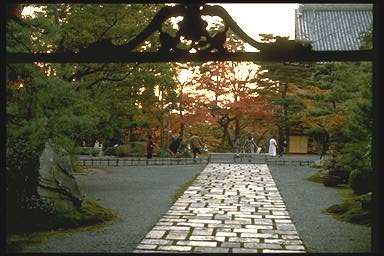
During the Heian period, Tendai and Shingon developed into the most powerful schools of Japanese Buddhism. The eclectic Tendai school housed a variety of teachings, some of which developed into popular movements. Tendai doctrine is based on the Lotus sutra, which holds that all men and women partake of the Buddha-nature, and thus are capable of enlightenment. Though a major function of early Heian Tendai was the performance of rituals to ensure the welfare of the state, the Lotus sutra's teaching aroused concerns with the salvation of the individual, that drew increased attention from the tenth century on. Tendai teachings urged believers to seek paradise by relying on the compassion of saviour buddhas and bodhisattvas. Many Tendai practices, moreover, were eventually simplified so that they appealed to even uneducated people. For example, devotion to the Lotus sutra made the scripture into a talisman, and people believed that if its verses were recited to even a beast, the creature could be reborn in a better life. The chanting of Amida's name began as an aid to contemplation, but turned first into a magic charm, then into a simple sign of faith in the Buddha's compassion.
Esoteric (Tantric) teachings, central to the Tendai and Shingon schools, also contributed to Buddhism's eventual broad acceptance. These teachings, termed "esoteric" because they were transmitted orally and in secret from master to qualified disciple, were designed to lead a practitioner to Buddhahood in his present life. In this sense esotericism was highly elitist, but it was also laced with folk elements, such as techniques of healing and magic, that enhanced the appeal of Buddhism to simple people. Aristocrats and commoners alike were also attracted by the expressions of esoteric Buddhism--Sanskrit syllables uttered as charms, splendid and colorful rites, and images of the buddhas carved on mountain cliffs.
Buddhism also broadened its appeal by continuing to absorb native beliefs. The Tendai and Shingon schools were especially willing to incorporate non-Buddhist deities into their pantheons. A syncretic system had begun to take shape in the Nara period, when the kami were first seen as beings in need of enlightenment and as powerful deities who could protect Buddhism, and temples and shrines were built on one another's precincts.
The system was further enhanced by the doctrine that certain kami were the manifestations of particular buddhas and bodhisattvas, and that doctrine occupied an important place in esoteric teachings. For example, the kami of the important Kumano shrine in Kii province (Wakayama prefecture) were seen as manifestations of the buddhas Amida and Yakushi, and of the Eleven-faced and the Thousand-armed Kannon. Although the veneration of kami is often termed "Shinto," several recent scholars have argued that it is impossible to talk about "Buddhism" and "Shinto" as if they were two separate religions. By the Heian period, "Buddhist" temples and "Shinto" shrines often shared the same precincts, and the functions and characteristics of buddhas and kami often became confused.

 Go on
to next section.
Go on
to next section.